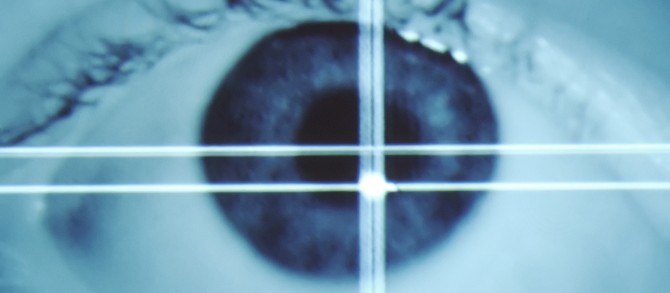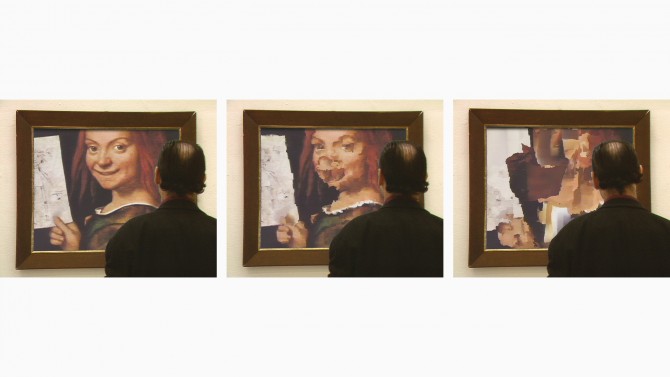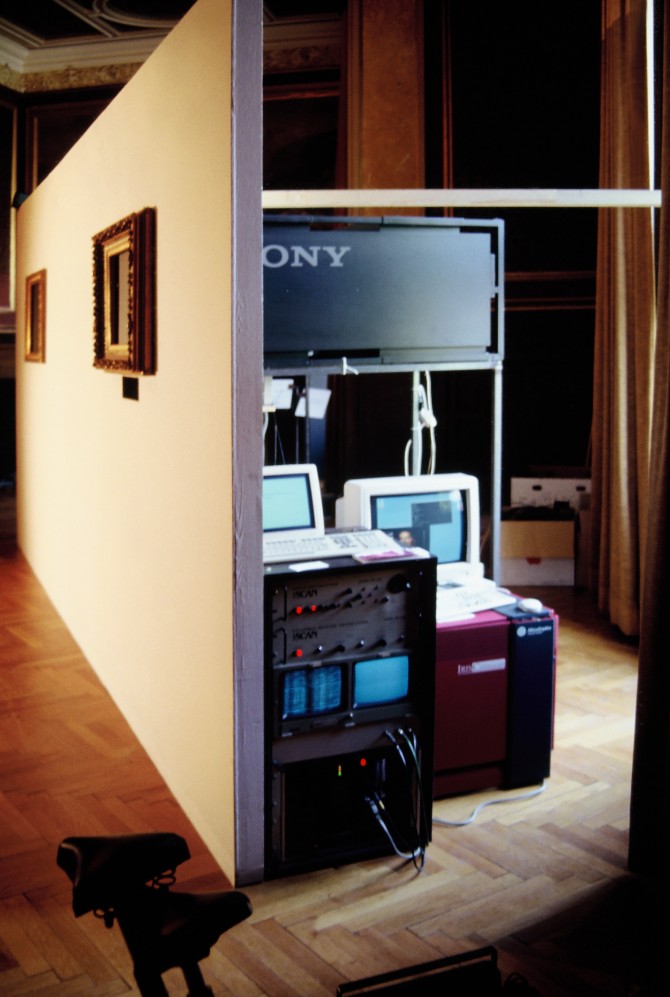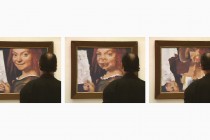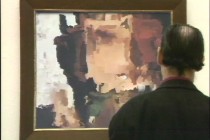De-Viewer, 1992
Ars Electronica, Linz, Austria
At the first sight, De-Viewer looks like a traditional oil painting on a wall. With closer inspection, one realises that the painting is deforming at exactly the same place where it is looked at. The viewer’s gaze affects the image, which is never seen in the same condition twice.
A framed rear projection on a canvas shows the painting. An eye-tracking system is analysing the spectator’s gaze, from which the exact co-ordinates on the canvas can be calculated. The co-ordinates are then sent to the graphics program that distorts the picture in reaction. As soon as one looks at the picture, it begins to distort. The image is reset to its original condition if nobody is looking at it for 30 seconds.
The project was developed as a reaction to the general attitude to computers as tools rather than a medium, still prevalent at the end of the 80s. The painter swapped brush for a mouse, but used it almost exactly the same way. This installation was to promote one of the most crucial qualities of computers as a medium, its interactivity or mutual dialogue. The painting chosen for this installation, “Boy with a Child-Drawing in His Hand” by Giovanni Francesco Caroto, shows the first documented child drawing in art history — an appropriate metaphor for the state of new media art in late 1980s.
